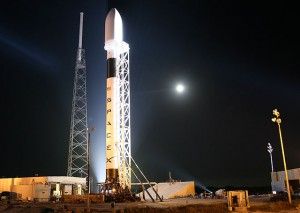Calif. Can Lead Commercial Space Age
The completion of the Space Shuttle’s 135th and final mission reminded many of us here in the Golden State that Edwards Air Force Base in Southern California was the shuttle’s primary landing site in its first decade of operation.
In the shuttle program’s second and third decades, Edwards was relegated to a secondary role as the Kennedy Space Center in Cape Canaveral, Fla., the shuttle’s home base, became NASA’s preferred site not only for shuttle launches, but also landings. Indeed, the only times Edwards saw action was when there was bad weather off the Florida coast.
California’s limited role in the shuttle program was not simply an insult to the state’s scientific and technological prowess. It also meant that the Golden State was a bit player in the space industry, which contributed $4 billion a year to the Florida economy, while accounting for more than 40,000 jobs.
That’s why last week’s retirement of the Space Shuttle fleet could prove a boon to California. For, after a half century on the periphery of the nation’s government-driven space program — from Mercury to Gemini to Apollo to the Space Shuttle — the Golden State could very well find itself at the forefront of a brave new era of commercial space activity.
Indeed, the commercial space industry, which in 2009 generated more than $200 billion in U.S. economic activity, according to a report by the Federal Aviation Administration’s Office of Commercial Space Transportation, could one day become a pillar of the California economy.
It certainly has as much promise as such still-developing industries as biotechnology and green energy, which have enjoyed favorable tax and regulatory treatment by the state government, as well as generous financial support by the state’s venture capital community.
Lifting Payloads
The first big opportunity for private space companies is to develop crew-carrying spacecraft that can deliver a payload to low-Earth orbit at considerably less cost per pound than NASA’s Space Shuttle was ever able to achieve.
Space Exploration Technology Corp., a Hawthorne-based company created by EBay co-founder Elon Musk, could become the first company to bring such a spacecraft to market after a successful demonstration last December of its Falcon 9 rocket (shown in the above picture) and Dragon capsule.
The spacecraft was launched into orbit 185 miles above Earth and circled the planet twice before its reentry and recovery. SpaceX estimates that its spacecraft can make such trips for $1,000 per pound, compared to $10,000 to $15,000 per pound for the Space Shuttle.
That makes the California company’s spacecraft the leading candidate to ferry NASA astronauts and cargo — as well as those of other space-going nations — to and from the International Space Station.
Meanwhile, Moon Express, a Silicon Valley start-up, has plans to send robotic spacecraft to the lunar surface to explore the potential for mining precious materials, including platinum group metals, rare earth elements and Helium3.
Such mining is at least decades away, but the R&D that will go into getting a spacecraft to the Moon, mining precious materials and returning the cargo back to Earth will yield unforeseen commercial spin-offs along the way. That’s one of the dividends of America’s half century in space.
Space Tech
In fact, many commonplace products and gadgets taken for granted today were originally developed for space-related purposes.
Like the ear thermometer, developed by San Diego-based Diatek Corporation, with the help of NASA’s Jet Propulsion Laboratory. And protective paint, used to coat the Golden Gate Bridge, among other structures, originally was developed to shield launch structures from salt-air corrosion, rocket exhaust and thermal stress.
And invisible dental braces jointly created by Costa Mesa-based Ceredyne and Monrovia-based 3M Unitek in 1987, using a compound — translucent polycrystalline alumina (TPA) — developed with impetus from NASA Advance Ceramic Research.
These are but three of the thousands of innovations that are byproducts of space-related R&D. And any number of those innovations have been brought to market by California companies, like Diatech, Ceredyne and 3M Unitek, generating economic activity within the Golden State and creating jobs.
For much of the past half century, Florida has been the unchallenged hub of American space activity. Not because its universities turned out the best scientists and brightest engineers; nor because the tech companies clustered on Florida’s so-called Space Coast were more innovative than those in any other state.
But because the Sunshine State was protected from meaningful competition by NASA’s exclusive dominion over U.S. space activity.
When the shuttle completed its final mission last week, it signaled the end of the government’s space monopoly and the dawning of the commercial space age. And as California companies have dominated the computer age and dominated the Internet era, our homegrown companies should similarly dominate in space.
— Joseph Perkins
Related Articles
LOL: Feds now tout 'higher-performing' rail, not bullet train
The federal government has long asserted that its provision of $3 billion-plus in 2009 “stimulus” funds to California for its
Brown rebuffs corporate welfare
Oct. 14, 2012 By Steven Greenhut SACRAMENTO — In much of the country, the mere mention of the name, Jerry
CA electric rate reform adjusts rates from 2001 crisis
Now that the $42 billion in debt from the 2001 Electricity Crisis has been paid off, California is in the process of re-working





